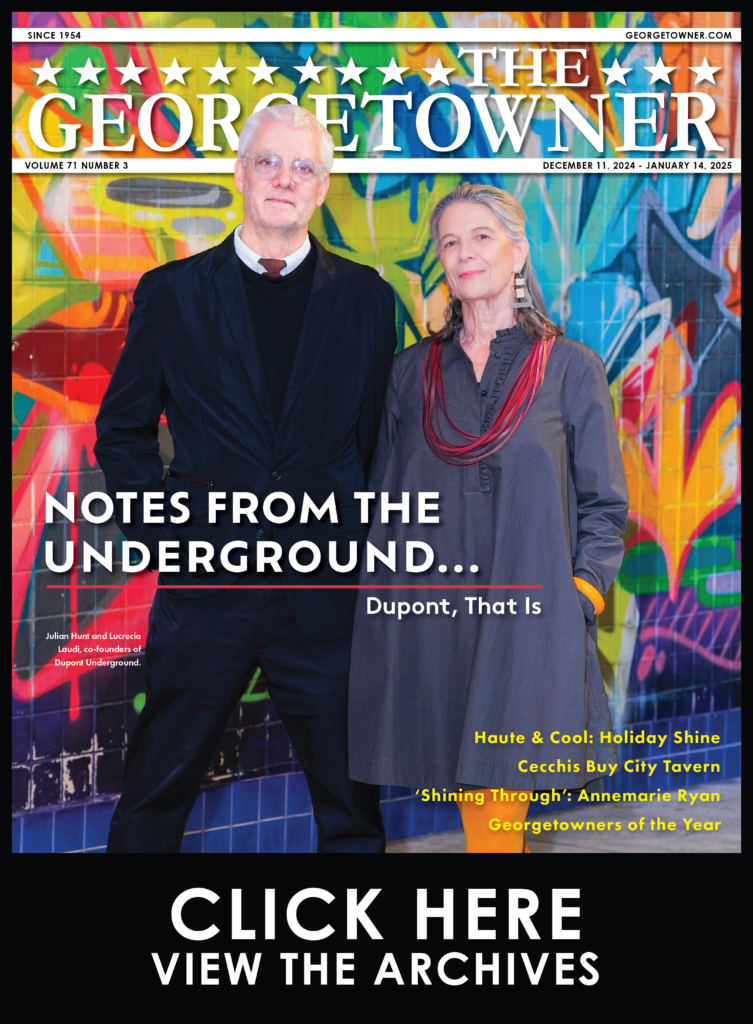The Peabody Room’s Jerry McCoy — and Its Prize Possession
By • July 21, 2016 0 1553
When you first meet special collections librarian and archivist Jerry McCoy, he appears as much a mystery as the materials he guards so closely at the Peabody Room in the Georgetown Neighborhood Library (part of the D.C. Public Library system) on R Street NW.
As you start a conversation with him, however, he lights up like the skating rink at Washington Harbour during Christmastime. His knowledge about Georgetown and Washington far exceeds anything you can find in books or online.
It’s as if McCoy placed every stone of the building designed by architect Nathan C. Wyeth, paid for with $150,000 from the District’s Appropriation Act of 1935. Before the three-story building was built, there was the one-room Peabody Library, which opened in 1872 at the Curtis School on O Street NW (demolished in 1951). It was financed with $15,000 donated by philanthropist George Peabody, who died in 1869 and did not see his dream come true. His legacy lives on in the archives and books that speak loudly when McCoy greets you in the Peabody Room.
Recently, The Georgetowner spoke with McCoy about his home away from home.
*Describe a typical day in the Peabody Room.*
McCoy: There is no typical day. No two days are the same. People come here for so many reasons. Students come to do research for term papers. Georgetown homeowners come to learn more about their homes. Some people just want to know the history of their house, but many believe that history will increase the value just before a big sell. We have visitors that come just to see our prize possession.
*[The prize possession McCoy is speaking of is a portrait of former slave turned businessman Yarrow Mamout. Yarrow was born in Guinea and sold into slavery in 1852 when he was 16 years old. He lived in Takoma Park for many years with his master, Samuel Beall, and later moved to Georgetown with Beall’s son Samuel. He was known around Georgetown as a jack-of-all-trades turned businessman who saved enough money to buy his freedom at the age of 60 years. Mamout owned his own home on Dent Street — the site of recent archaeological work — where many believe he is buried.]*
*How do you feel about Yarrow’s departure to the Smithsonian National Portrait Gallery?*
McCoy: He is not leaving forever, and it is comforting because his portrait has been here for so many years but not many people have seen him. We were honored when the Smithsonian requested the portrait be a part of the exhibition until 2019. What that means is millions of people a year will see Yarrow. They will read about him and want to learn more about him. They will come to the Peabody Room, and we will share his story until he returns back home.
*What makes his home at the Peabody Room different from other public libraries in or around D.C.?*
McCoy: The Peabody Room is a small portion of the massive archives that are housed at the Martin Luther King Jr. Library [D.C.’s main public library]. What makes us different is we focus only on the history of Georgetown. When people come here they are not looking for information about Washington. They are looking for information about Wisconsin Avenue or the history of slavery in Georgetown.
*What is the most frequently question asked about the Peabody Room and the most popular piece of history housed in this room?*
McCoy: Any and all information about John F. Kennedy and his life as a resident in Georgetown. No matter what patrons come here for, they find their way to the left corner of this room. They cannot resist looking at the pictures and the maps that show the different locations where Kennedy lived before moving into the White House.
*Do you feel the Peabody Room is serving its purpose and that Yarrow’s departure will serve others?*
McCoy: Yes to both questions! Mr. Peabody wanted a place for the young and the old to come and learn. He wanted people to read and talk about history and books. The entire building provides just that. Mr. Peabody lived during a time in which he only served this area. Yarrow leaving continues the journey Mr. Peabody started. A piece of all of us will go with Yarrow.

